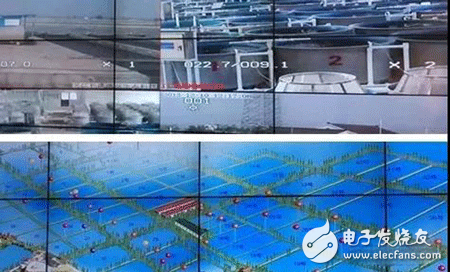In recent years, artificial intelligence has rapidly warmed up at home and abroad. This time, the temperature rise is not the same as the previous temperature rise. It is not initiated by the academic community, but initiated by the industry. This warming process may be slightly slower in the agricultural sector, but we can see many sample projects every year. Experts initially estimate that by 2025, the potential market for artificial intelligence in agriculture will be approximately $20 billion.

Intelligent fish farming under the support of sensors and wireless communication technologies.
The most obvious is that the most talked about topics in the aquatic industry in the past two years is factory farming, which is a facility farming, which is a transformation and upgrading. Now, whether it is factory farming or more advanced recirculating aquaculture, it is only the initial stage of transformation and upgrading. Artificial intelligence is the ultimate goal. In the final analysis, it is to liberate the labor force. Aquaculture is a heavy-duty work. Under this background, no matter whether it is outer pond culture, indoor culture or recirculating aquaculture, the direction of artificial intelligence cannot be avoided in the future.
Intelligent aquatic products, or the aquaculture 4.0 era, refers to the modern advanced agricultural production mode that uses industrial production to achieve intensive and efficient sustainable development under relatively controllable environmental conditions, that is, the advanced aquatic facilities are compatible with the land and have a high degree. The technical specifications and high-efficiency intensive scale of production methods.
It is conceivable that the future intelligent aquatic products are such that the specified equipment is automatically turned on or off by collecting the temperature, water temperature, dissolved oxygen, nitrite, ammonia nitrogen, and lighting environment parameters in the greenhouse in real time. It can be processed at any time according to user needs, providing scientific basis for automatic monitoring of integrated ecological information of facilities agriculture, automatic control of environment and intelligent management. The module collects signals such as temperature sensors and transmits data via the wireless signal transceiving module to realize remote control of the pond or the culture pond.
In 2002, Intel pioneered the establishment of the world's first wireless vineyard in Oregon. Sensor nodes were distributed in every corner of the vineyard, detecting soil temperature, humidity, or the amount of harmful substances in the area every minute. Make sure the grapes grow healthy. This is an example of a typical precision agriculture and intelligent farming.
In 2009, the Fujitsu Farm Management System developed by Fujitsu of Japan focused on the quality and safety control of agricultural products throughout the life cycle, driving facility agricultural production, intelligent livestock and intelligent aquaculture, facility agriculture management, remote monitoring and maintenance of farms, and aquaculture. The whole process of production is intelligent.
Therefore, some people have selected the most breakthrough technologies in aquaculture in the future. These technologies actually represent the future direction of artificial intelligence fisheries. We believe that there will be more interdisciplinary exchanges and integrations in the future aquatic industry, step by step towards artificial intelligence.
Electronic components are components of electronic components and small machines and instruments. They are often composed of several parts and can be used in similar products; often refer to certain parts of electrical appliances, radios, instruments and other industries, including capacitors, transistors, General term for electronic devices such as hairspring and spring
Components Sourcing,ADS8168IRHBT,10M50DAF484C8G,Chip,Components Supplier
Huizhou Liandajin Electronic Co., Ltd , https://www.ldjpcb.com